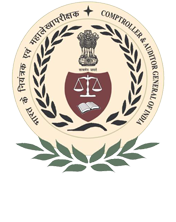Audit Reports

Pondicherry
Report of 2009 - Compliance and Financial Audit on State Finance of Government of Pondicherry
Overview
The Comptroller and Auditor General's Audit Reports in the past included comments upon the Union Territory's finances. Since these comments formed part of the Audit Reports, it was felt that the audit findings on the Union Territory finances remained camouflaged and they did not receive adequate attention because the majority of the audit findings were on compliance and performance aspects. In recognition of the need to bring Union Territory finances to centre-stage, a stand-alone report on Union Territory finances was considered an appropriate audit response to this challenge. Accordingly, from the report year 2008-09 onwards, the Comptroller and Auditor General has decided to bring out a separate volume titled 'Report on Union Territory Finances'.
As the recommendations of the Twelfth Finance Commission were not applicable to the Union Territories, no fiscal responsibility legislation was enacted by the UT Government. Consequently, no target was set by the Government for containing the fiscal deficit. The report based on the audited accounts of the Government of Union Territory of Puducherry for the year ended 31 March 2009, this report provides an analytical review of the Annual Accounts of the Union Territory Government. The report is structured in three Chapters.
Chapter I is based on the audit of Finance Accounts and makes an assessment of the Government's fiscal position as at 31 March 2009. It provides an insight into trends of committed expenditure and borrowing patterns, besides giving a brief account of Central funds transferred directly to State implementing agencies through the off-budget route. Chapter II is based on audit of Appropriation Accounts and gives a grant-wise description of appropriations and the manner in which the allocated resources were managed by the service delivery departments. Chapter III is an inventory of the Government's compliance with various reporting requirements and financial rules. The report also has additional data collated from several sources in support of the findings.

